written by David Steffen
The year is almost over, and here we are with the obligatory award eligibility post. I know some people get annoyed by these, but to me they’re kind of like those Christmas letters from family members–I like reading other people’s posts to see what they’ve been up to for the year if nothing else.
I’ll start with my own stories, then on to Diabolical Plots stuff (I thought about making separate posts, but for those who don’t care for award eligibility posts I thought that might just be twice as annoying).
Please note that I’m not asking anyone to vote for these things. There is a lot of amazing work out there and I hope you all read as much as you can and vote for what you think is the absolute best, no matter who publishes it. But I do like to put these posts together partly to look back at what happened this year for myself, and also to put some links together for others who might be interested in checking some of this out.
If you would like to share your own award eligibility posts, please feel free to leave links in the comments to those.
My Stories
Not too bad of a year, with 5 original stories by me published at various places (especially since I’ve written almost nothing new!)
These are eligible in the Short Story category for most awards.
“A Touch of Scarlet” at Orson Scott Card’s Intergalactic Medicine Show
This is one of my favorite stories of anything I have ever written. Described as briefly as possible, it is a YA coming-of-age science fiction story in a democratic dystopia. Our nameless protagonist has reached the age where they are no longer sheltered in the childrearing creche, and is beginning their year of transition between childhood and adulthood. Inside the creche, they were accustomed to constant contact with all of the other children. In the world of adults, that kind of contact is forbidden. For one year, they will have contact with their Mentor who is tasked with helping them acclimate, but apart from that temporary connection, no personal connection with other citizens is allowed, nor any expression of identity that would set them apart from anyone else. Violation of these laws (which are determined by instant voting across all the citizenship) is punishable by death for adults, though adolescents are allowed some latitude.
You can read the beginning of the story and see the wonderful illustration here. The rest of the story does require an IGMS subscription. But, the subscription is quite a good deal. $15 gives you access to not only the upcoming year’s stories, but also every issue in their back catalog. So, if you’ve a mind to catch up on some of those stories, the price is very affordable for a whole lot of fiction.
“Mall-Crossed Love” at Andromeda Spaceways Inflight Magazine
A star-crossed lovers story that takes place in a ubiquitous shopping mall. A boy from the tech shop and a girl from the stationery shop across the way falling for each other despite the hostilities between their families. It’s absurd, action packed, romantic, and fun.
You can pick up the copy of ASIM, or I can send a copy of the story on request.
“Divine Intervention” at Digital Fiction Publishing
A science fiction story of a man going into the drug slum known as Heaven to save his brother. His brother has joined a techno-drug cult that, among other things, installs metallic halos onto their members as part of their ritual, and no one has been broken away from the cult if more than 24 hours has passed since joining.
You can pick up a copy on Amazon for 99 cents.
“Morfi” at The Colored Lens
This is my attempt to write a story reminiscient of my childhood favorite author: Roald Dahl. The story begins as young Johnny arrives at class (late as usual) with a sample of the mythical and magical morfi fruit. Hijinx ensue.
The story is free to read, and it’s rather short, so I won’t talk about this one further.
“Subsumation” at Perihelion
Science fiction/horror story from a non-human point of view, as an alien crash lands. It’s very short, and free to read, so I’ll leave you to it. It’s probably not safe for work.
Diabolical Plots Fiction
This was the first full year of fiction at Diabolical Plots. Since the stories are all free to read, I’ll stick to very short teasers for each.
The first two stories I put on the top of the list because they have been ones that have gotten particularly strong traffic and feedback, so I think they might be of particular interest.
These are all eligible for Short Story categories.
“Further Arguments in Support of Yudah Cohen’s Proposal to Bluma Zilberman” by Rebecca Fraimow
“The Banshee Behind Beamon’s Bakery” by Khaalidah Muhammad-Ali
“The Osteomancer’s Husband” by Henry Szabranski
“May Dreams Shelter Us” by Kate O’Connor
“One’s Company” by Davian Aw
“The Blood Tree War” by Daniel Ausema
“The Weight of Kanzashi” by Joshua Gage
“Future Fragments, Six Seconds Long” by Alex Shvartsman
“Sustaining Memory” by Coral Moore
“Do Not Question the University” by PC Keeler
“October’s Wedding of the Month” by Emma McDonald
“The Schismatic Element Aboard Continental Drift” by Lee Budar-Danoff
Other Categories
Diabolical Plots itself is eligible for the Semiprozine category in the Hugos.
I (David Steffen) am eligible for Editor, Short Form in the Hugos, between my editing of Diabolical Plots and the Long List Anthology.
Laurie Tom and I are both eligible for Best Fan Writer category for our articles here, and individual articles could be for Best Related Work.
People ask me once in a while what the Submission Grinder is eligible for in the Hugos. The answer is: nothing. The Hugo Awards are focused on things of interest to science fiction fans, who aren’t as a whole going to be interested in online tools for writers, so there is (fittingly) no category that it would really fit into. Which is fine. Probably the closest way to send a nomination for that would be to nominate Diabolical Plots as a semiprozine, since the Submission Grinder is one of the features of that, even if your average SF reader isn’t going to care about the Grinder.
People also ask me once in a while what Hugo categories the Long List Anthology editions are eligible for. The answer again is: nothing. The Hugo Awards don’t have an anthology or collection category. For most anthologies, one could nominate the anthology indirectly by nominating your favorite stories in it, but because of the premise of these anthologies, all of the stories are from the previous year and so are ineligible for this year’s awards. The closest way would be to nominate for Editor, Short Form.
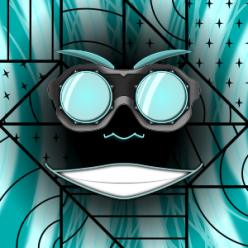

 True Blood was an HBO horror/mystery/romance series based on the Sookie Stackhouse series of novels by Charlaine Harris.
True Blood was an HBO horror/mystery/romance series based on the Sookie Stackhouse series of novels by Charlaine Harris.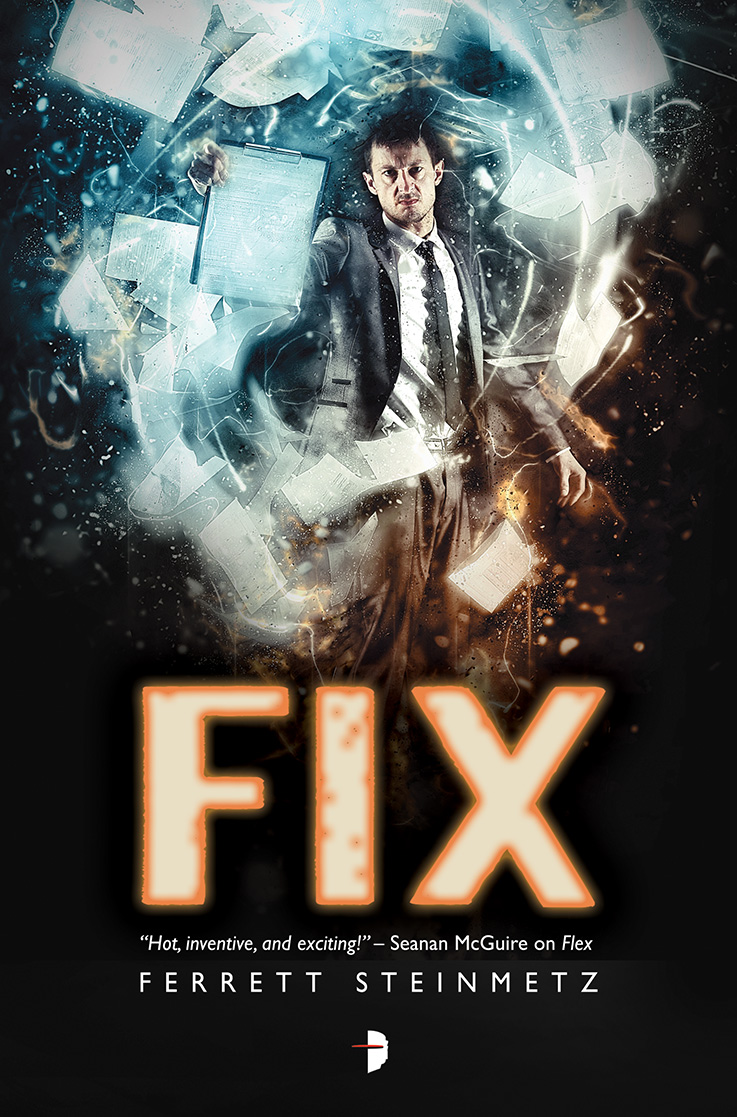 FIX is the third book in the ‘Mancy series by Ferrett Steinmetz. Before I go any further, if you haven’t read the previous two books,
FIX is the third book in the ‘Mancy series by Ferrett Steinmetz. Before I go any further, if you haven’t read the previous two books, 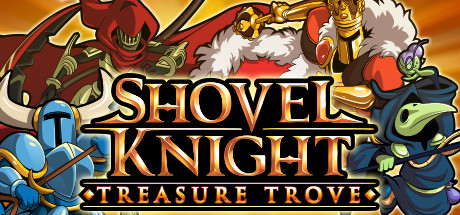 Shovel Knight is an 8-bit styled platformer action game published by Yacht Club Games in 2014.
Shovel Knight is an 8-bit styled platformer action game published by Yacht Club Games in 2014.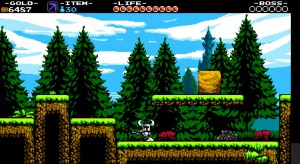
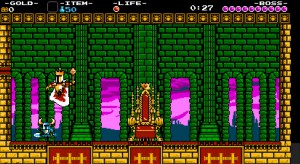 The levels are longish and progress is lost if you quite the game while you’re in the middle of one, so it’s best to have a little longer stretch if you want to sit down and play the game. But the levels do have checkpoints that help make the levels easier to progress through if you need them. Each level is very different in style and contains very different enemies, which nicely keeps the game fresh throughout the playtime. Each boss requires you to learn his patterns to be able to avoid and find opportunities to attack. The game is reasonably challenging and if you want to make it more challenging there are ways to ramp it up, such as avoiding collecting the magic weapon items, breaking checkpoints to make extra money instead of using them as checkpoints, avoiding health meter enhancing items, etc.
The levels are longish and progress is lost if you quite the game while you’re in the middle of one, so it’s best to have a little longer stretch if you want to sit down and play the game. But the levels do have checkpoints that help make the levels easier to progress through if you need them. Each level is very different in style and contains very different enemies, which nicely keeps the game fresh throughout the playtime. Each boss requires you to learn his patterns to be able to avoid and find opportunities to attack. The game is reasonably challenging and if you want to make it more challenging there are ways to ramp it up, such as avoiding collecting the magic weapon items, breaking checkpoints to make extra money instead of using them as checkpoints, avoiding health meter enhancing items, etc.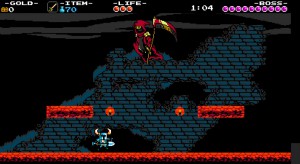 Challenge
Challenge
 In the summer of 2015 I watched the summer miniseries Wayward Pines on FOX which they ended up renewing for a second season in the summer of 2016. The events of season 1 of the Wayward Pines TV show (
In the summer of 2015 I watched the summer miniseries Wayward Pines on FOX which they ended up renewing for a second season in the summer of 2016. The events of season 1 of the Wayward Pines TV show ( The Last Town is a… I guess I’d call it an SF/horror thriller… the final book in a trilogy written by Blake Crouch and published in 2014 by Thomas & Mercer. There’s no way to discuss the events of this book without major spoilers for the first two books, so if you don’t want to know anything about book 1 and book 2, stop here. I have reviewed
The Last Town is a… I guess I’d call it an SF/horror thriller… the final book in a trilogy written by Blake Crouch and published in 2014 by Thomas & Mercer. There’s no way to discuss the events of this book without major spoilers for the first two books, so if you don’t want to know anything about book 1 and book 2, stop here. I have reviewed  Wayward is a… I guess I’d call it a mystery SF thriller… the second of a trilogy written by Blake Crouch and published in 2013 by Thomas & Mercer.
Wayward is a… I guess I’d call it a mystery SF thriller… the second of a trilogy written by Blake Crouch and published in 2013 by Thomas & Mercer.